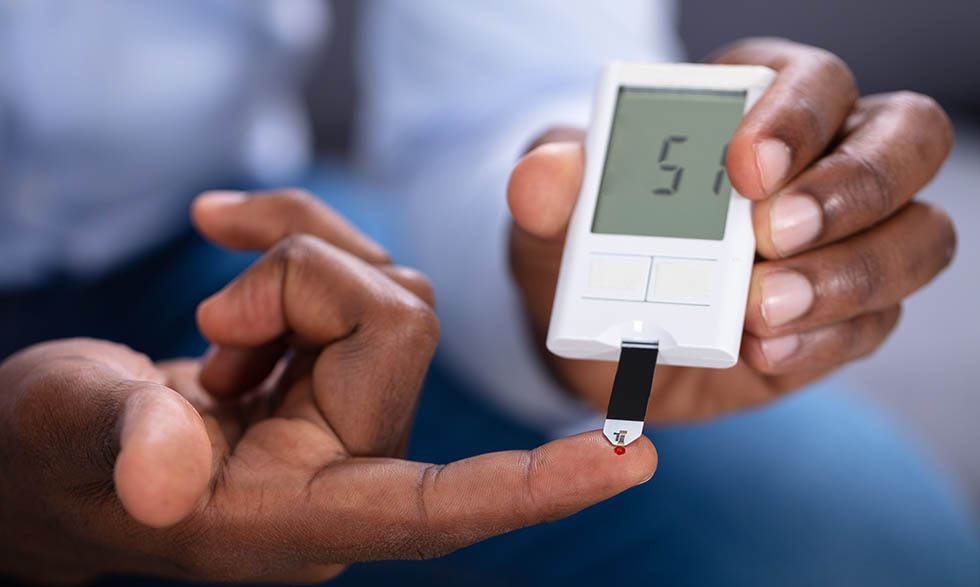More than 30 million Americans have diabetes, a disease that causes high blood sugar.
Normally, your body produces insulin, a hormone that helps regulate blood sugar levels. With diabetes, your body either can't produce enough insulin or can't properly use the insulin it does produce. This causes sugar to build up in the blood, which at high enough levels can damage nerves, eyes, kidneys, and other organs.
Here's what you need to know:
Age, weight, race and ethnicity, and health problems can affect your risk of developing type 2 diabetes
If you're age 45 or older, have a family history of diabetes, or are overweight, your risk of developing type 2 diabetes is higher. Physical inactivity, race, and certain health problems also can increase your risk. There is also a greater risk among certain races and ethnicities; for example, those of African American, Latino, Native American, and Pacific American descent. Make sure to contact your doctor or health care provider regarding screening to help.
Prediabetes is a warning sign
Prediabetes occurs when your blood sugar level is higher than normal, but not high enough to be type 2 diabetes. About 88 million American adults have this condition, and it can lead to type 2 diabetes. But you can do a lot to reduce your chances of developing the disease by losing weight and keeping it off. Staying physically active—for at least 30 minutes a day, five days a week—can also help. So can eating a healthier diet with less fat and calories.
Diabetes, if not controlled, can lead to health problems
If high blood sugar is left uncontrolled for too long, diabetes can lead to serious health problems. These include heart disease, stroke, kidney disease, eye problems, dental disease, nerve damage, and foot problems.
There are different types of diabetes
Type 1 diabetes, usually diagnosed in children and young adults, is an autoimmune disease. The immune system mistakenly attacks and destroys the cells in the pancreas that produce insulin. Without those critical cells, people with type 1 diabetes must take insulin daily to stay alive.
Gestational diabetes happens when you have high blood sugar during pregnancy. It frequently goes away after the baby is born. However, women with gestational diabetes have a greater chance of developing type 2 diabetes later in life.
Type 2 diabetes, the most common type, is linked to lifestyle factors, such as being overweight or inactive. It's also linked to genetics. It occurs when the body becomes resistant to insulin and fails to use it efficiently. When this happens, sugar builds up in the blood. Type 2 diabetes typically develops in middle-aged and older people, but it is becoming more common in young people. It sometimes can be controlled through diet and exercise.







